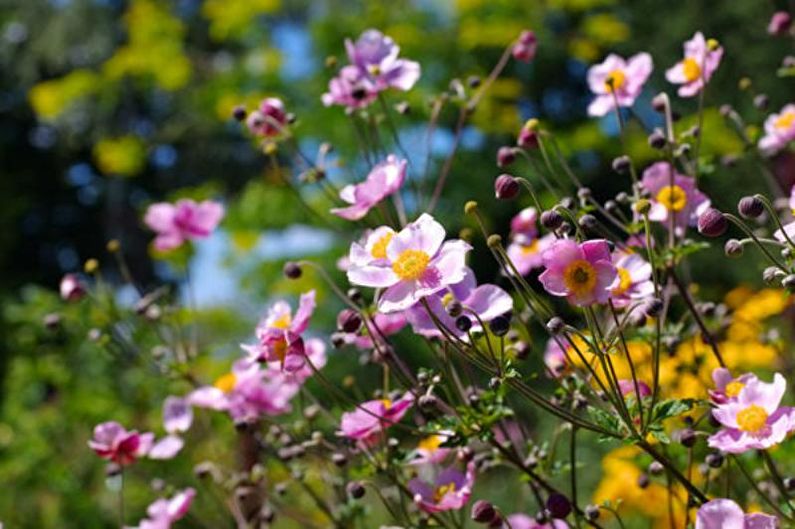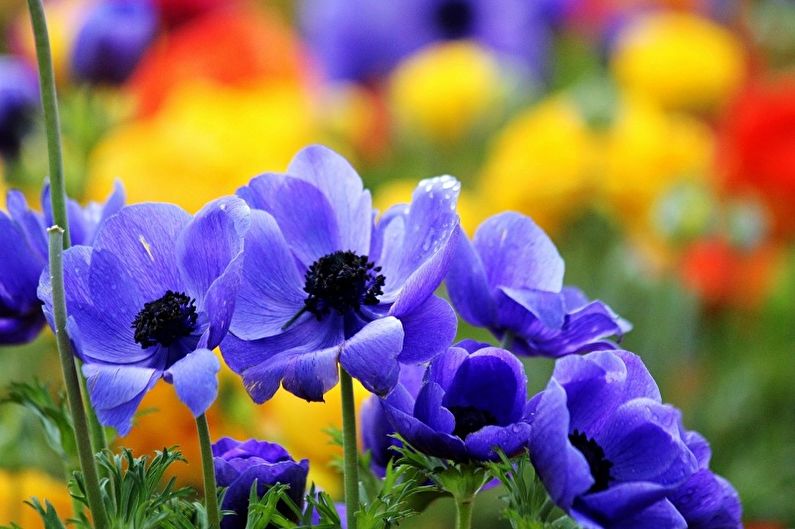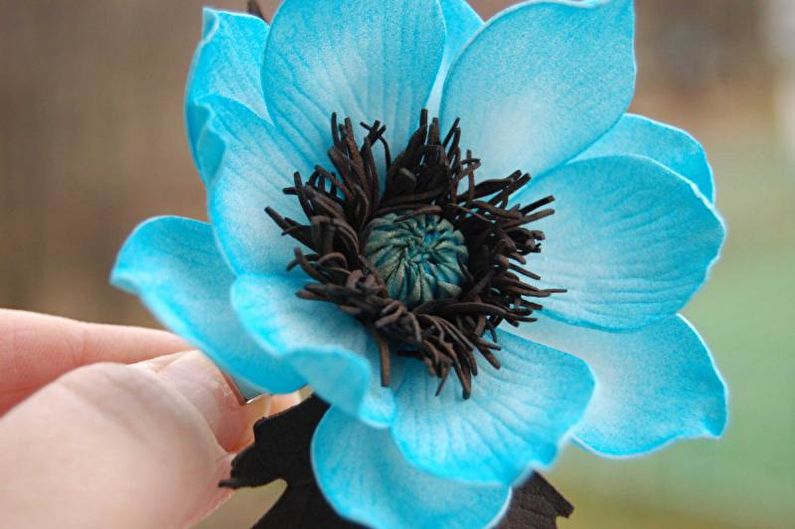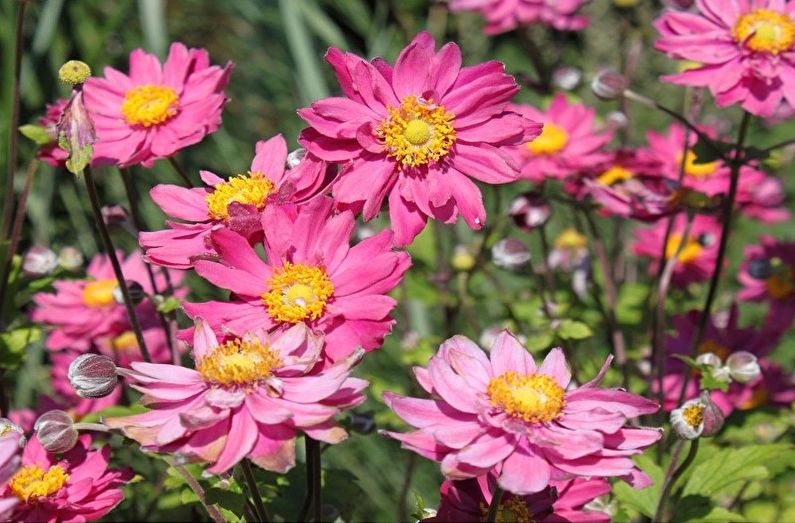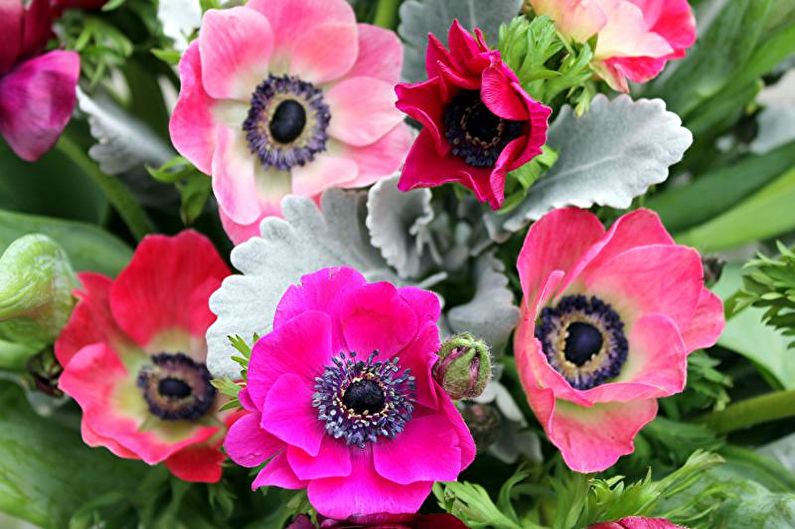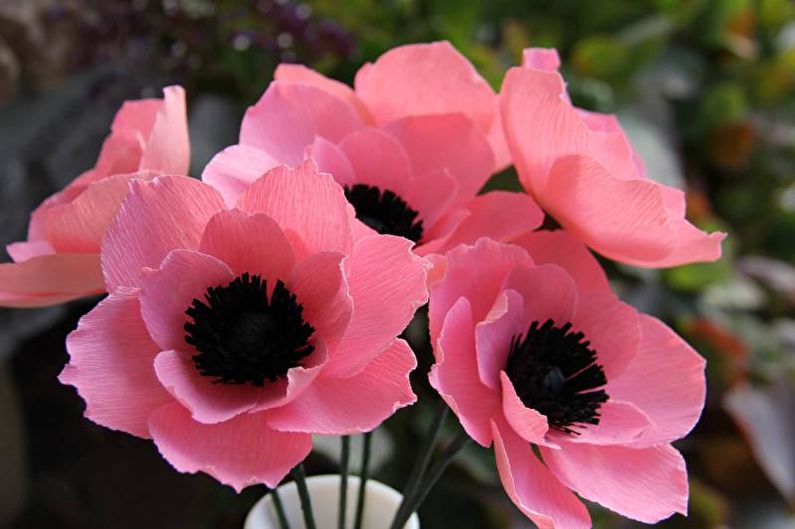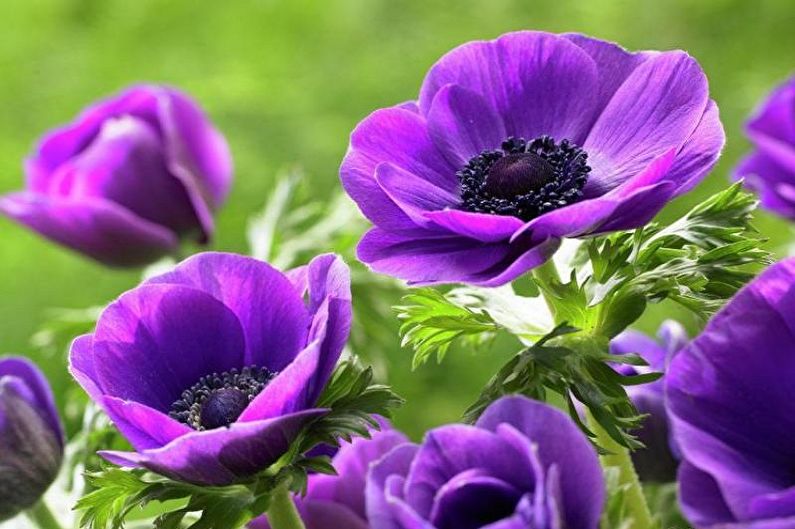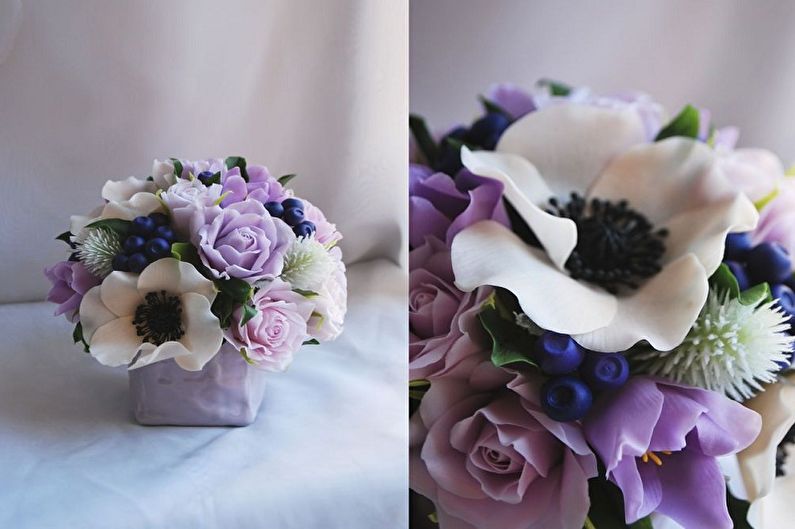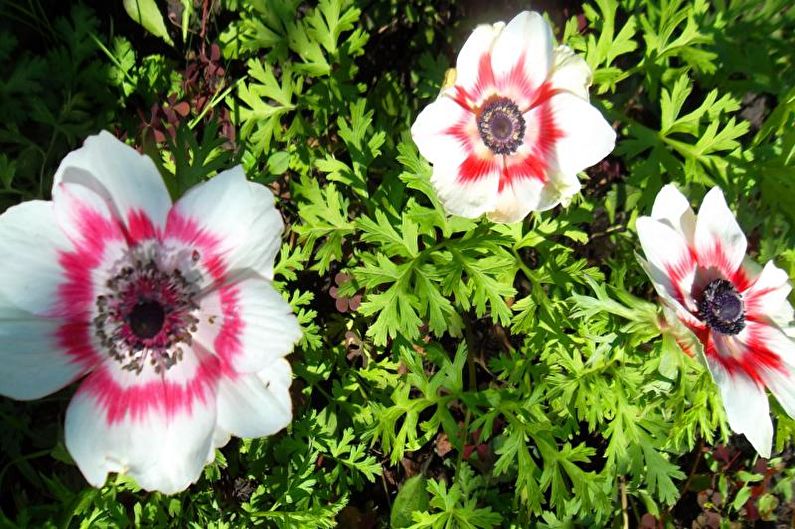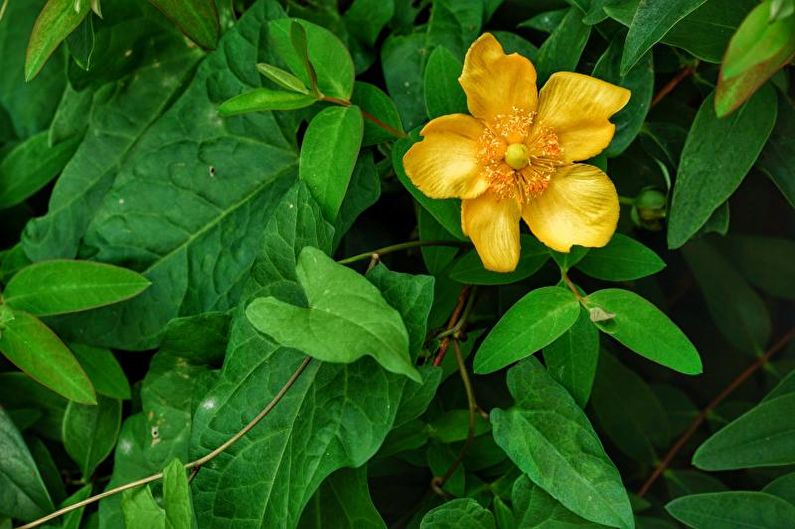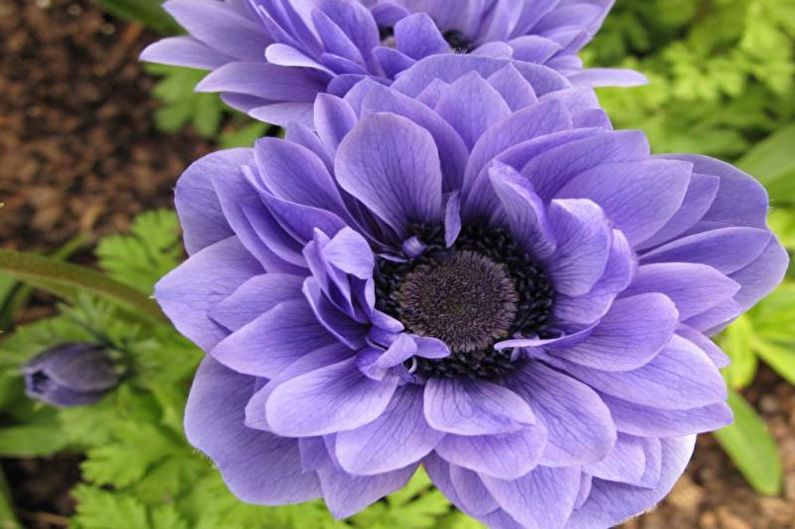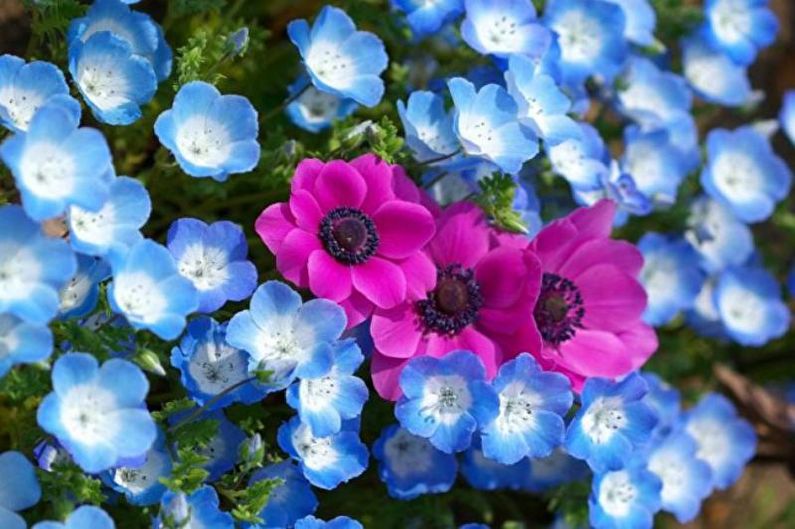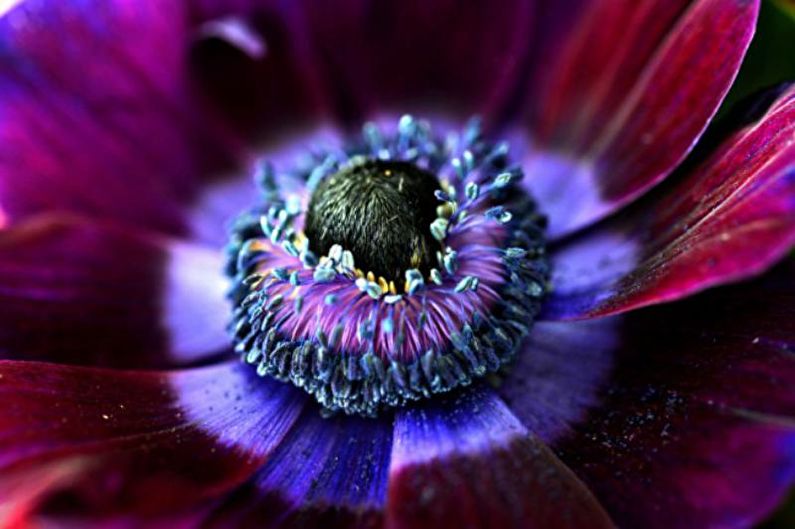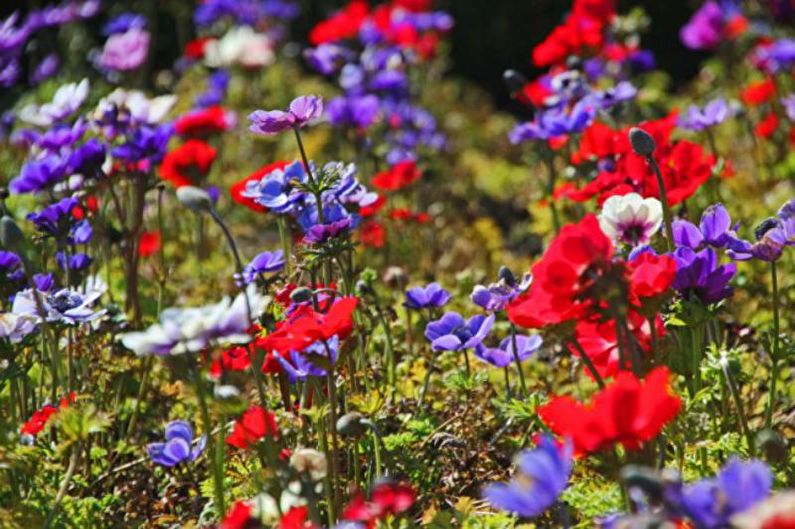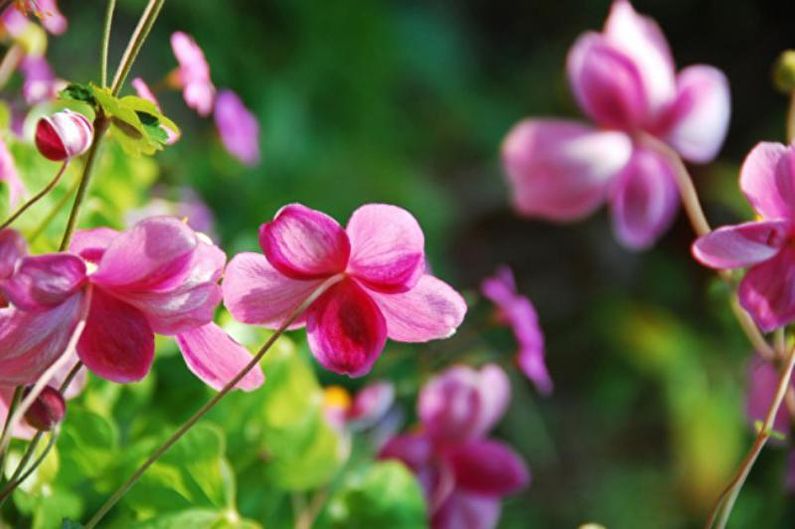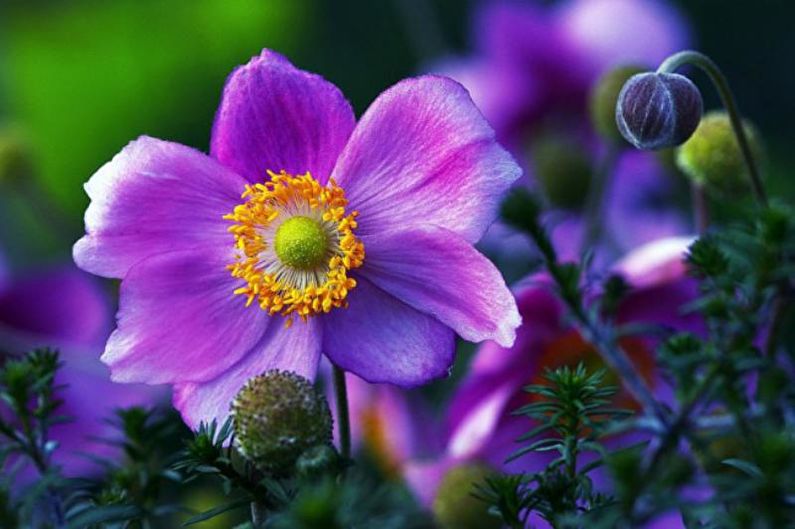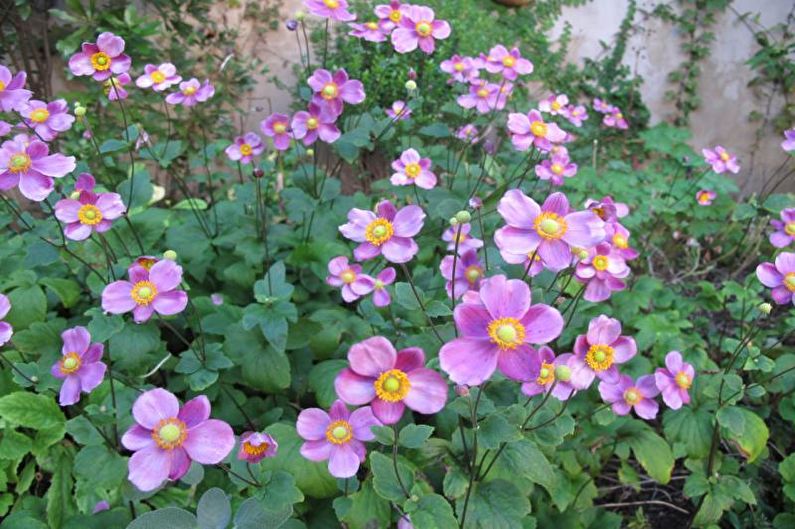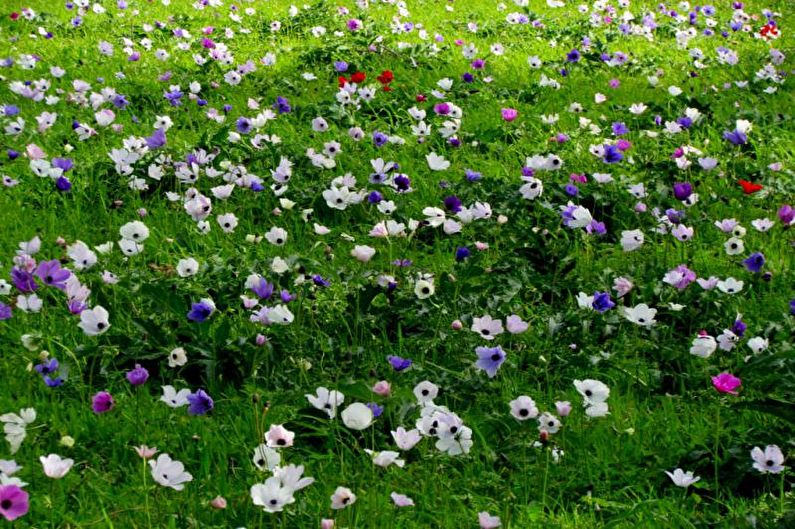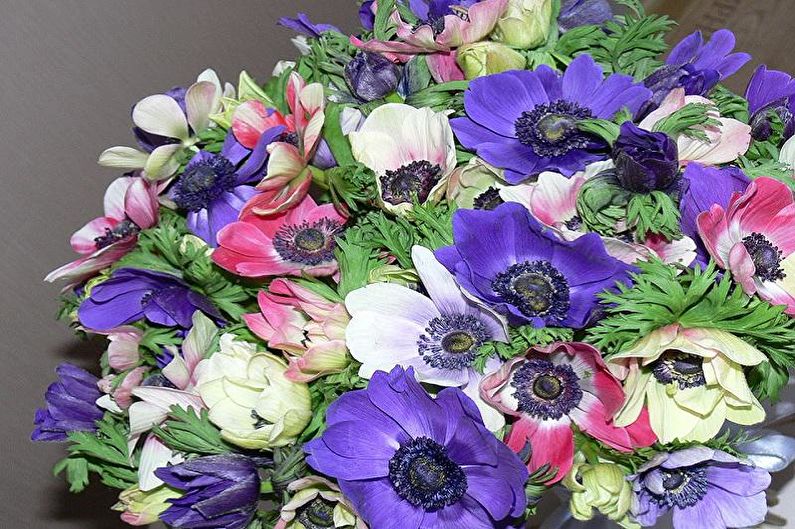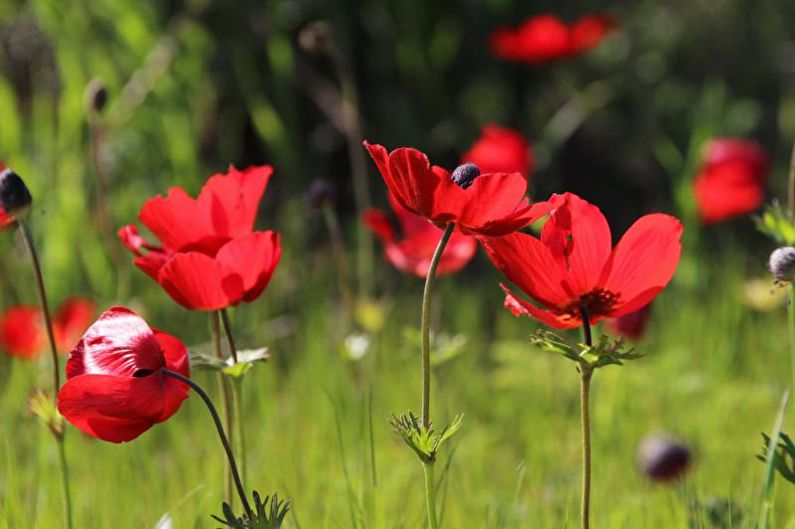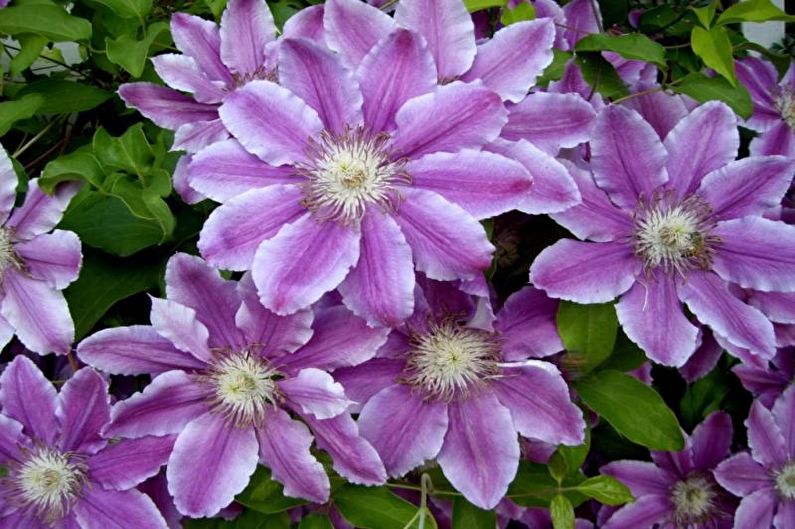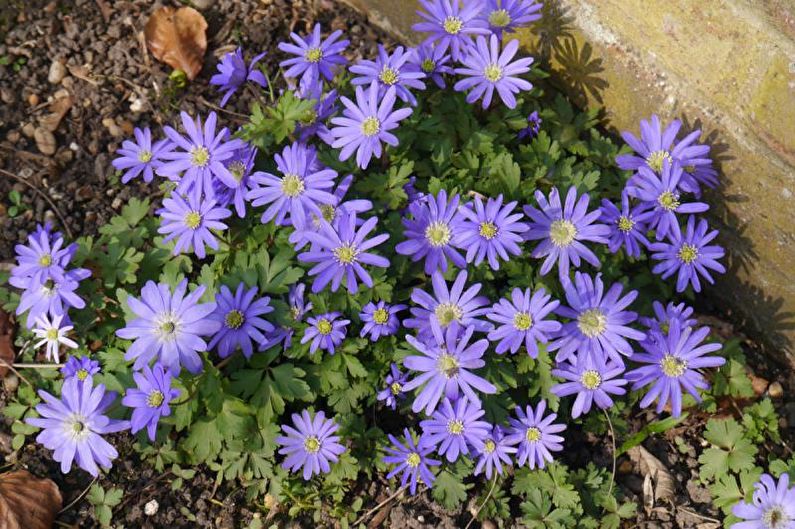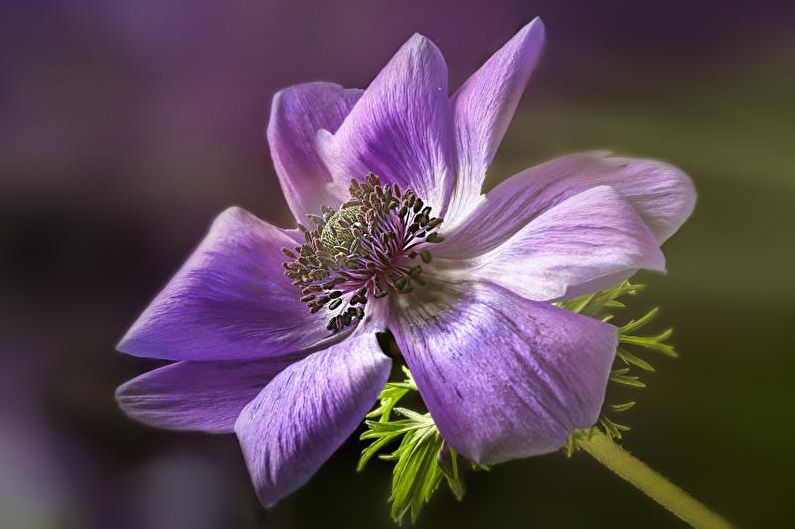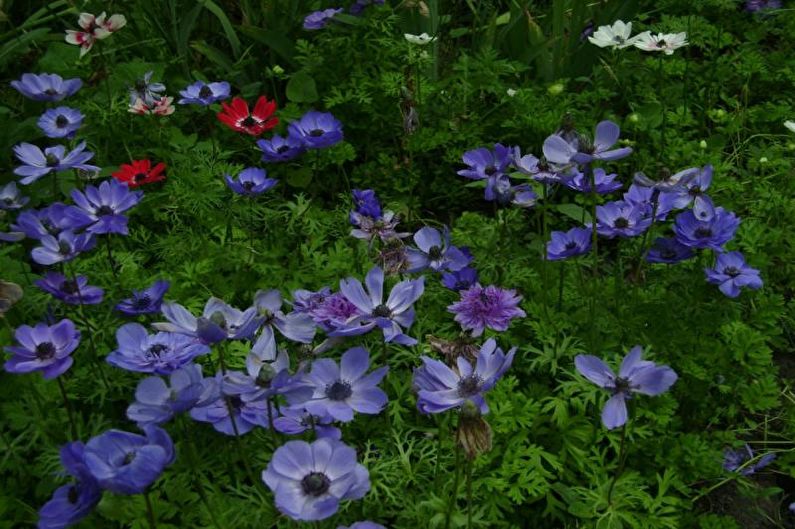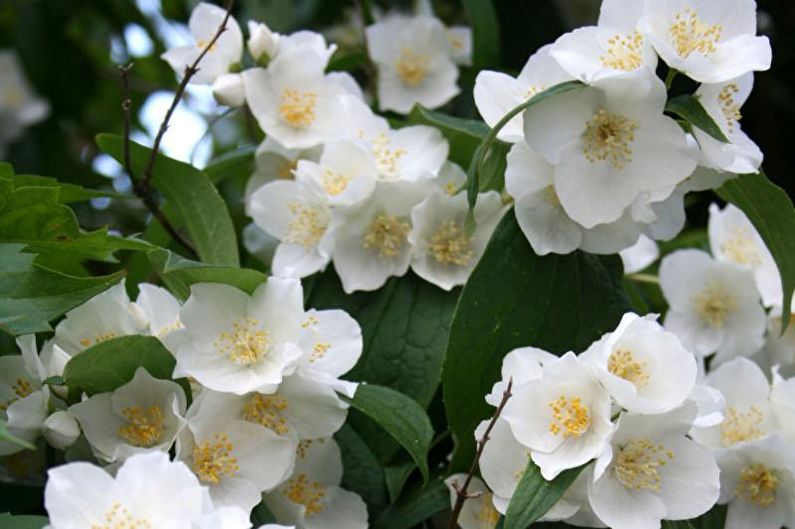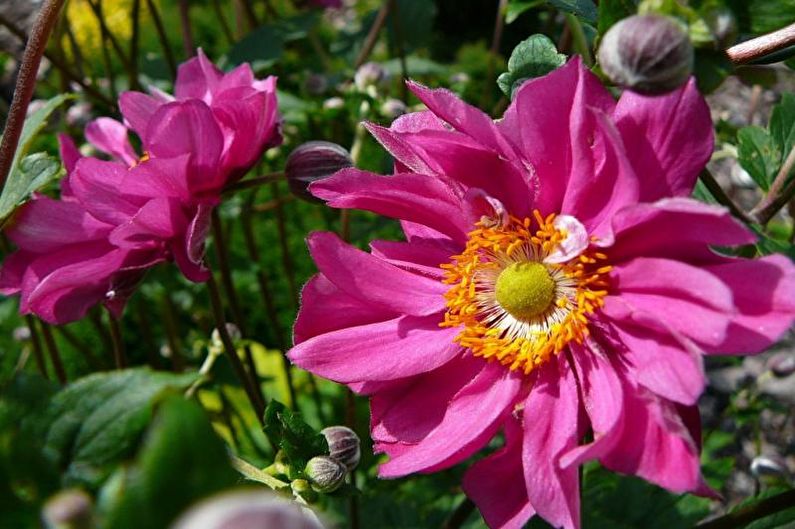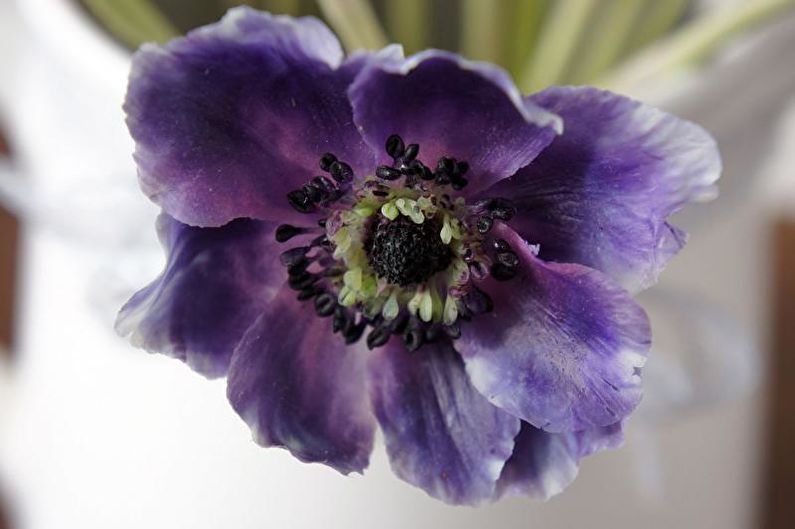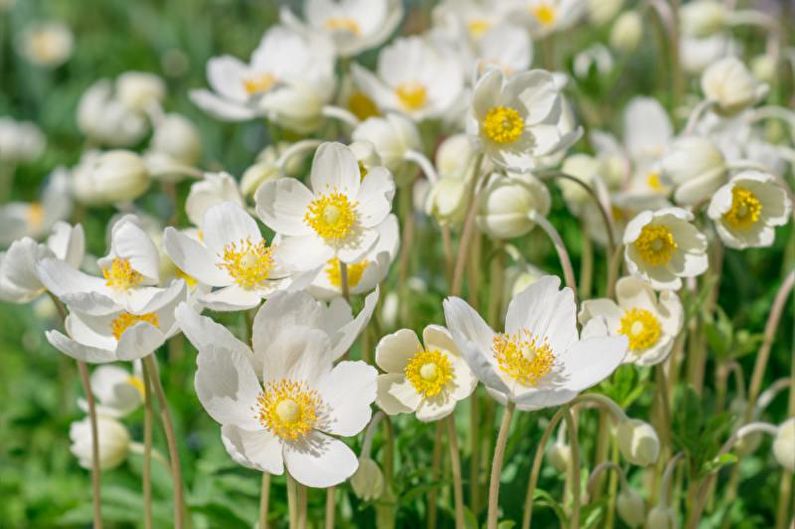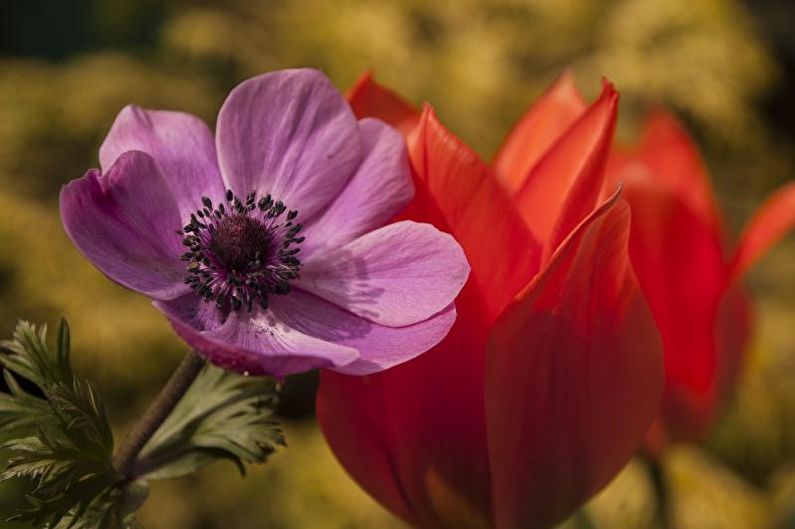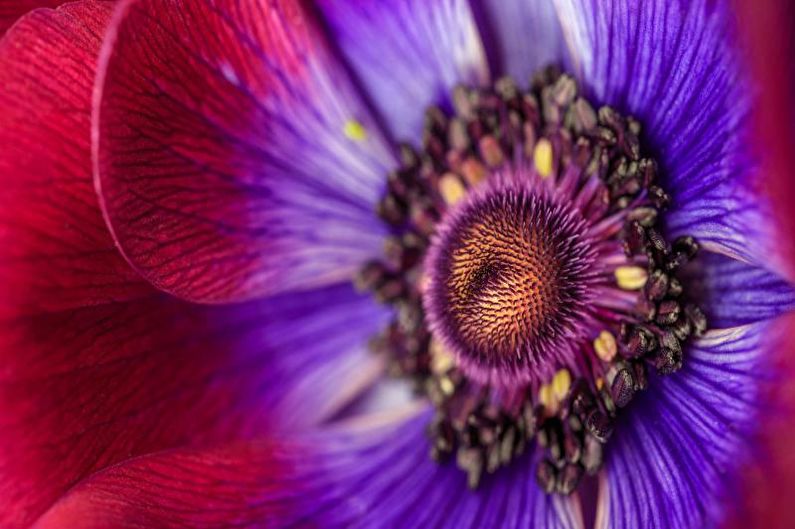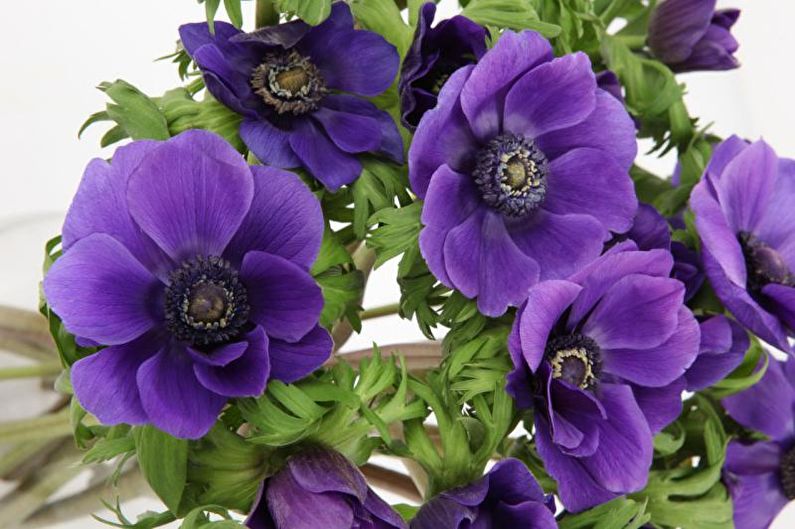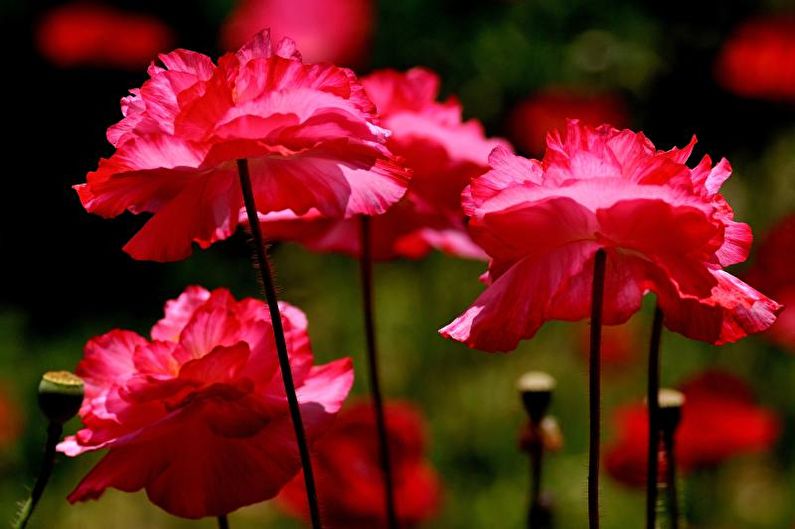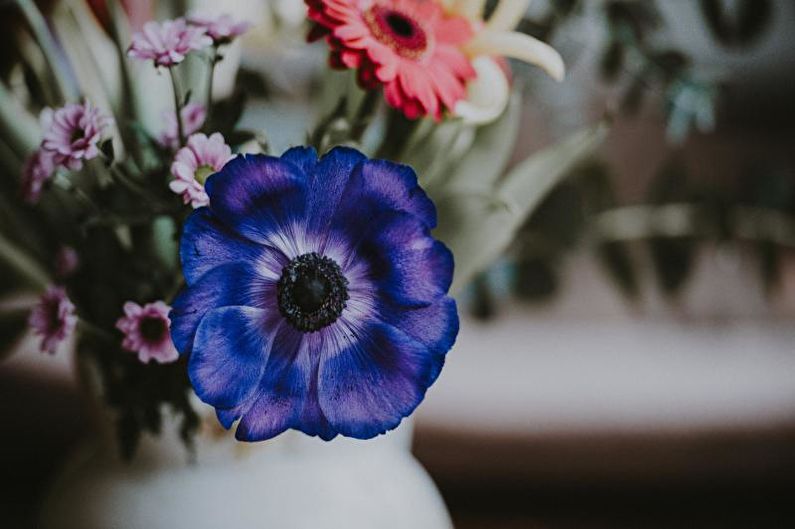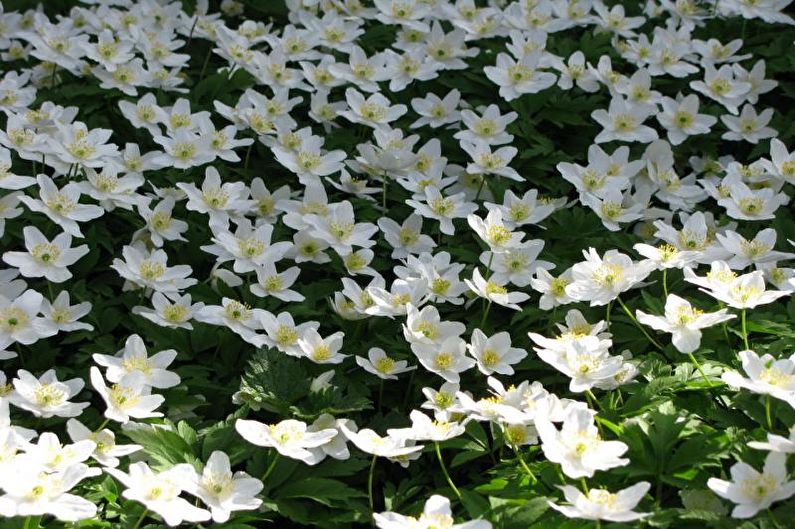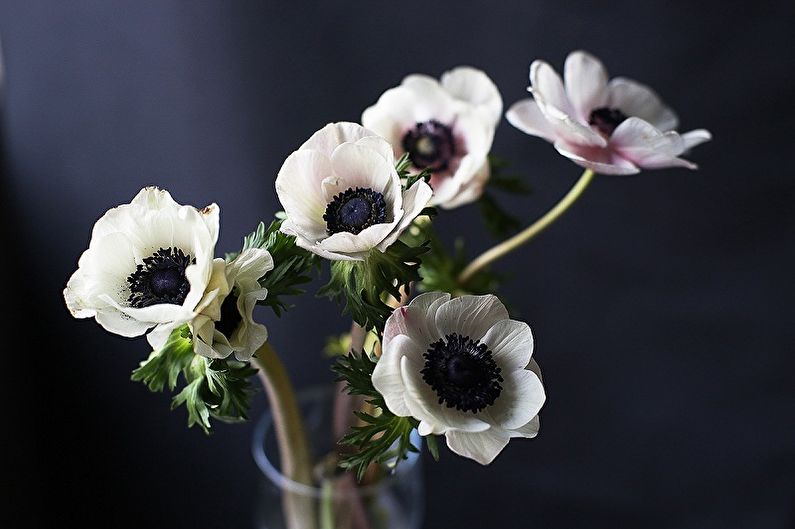
Anemones are perennial flowers that have won a place in the beds of many gardeners due to various shapes and many beautiful shades. Anemone, which in our area was called "anemone", looks good against the background of stone structures and in the neighborhood with other flowers. Remarkably lives next to hyacinthoids and daffodils, as well as undersized - Iberis, forget-me-nots or violets.
Types of Anemone
Today, more than 150 different species are distinguished, but our climatic zones accept such the most popular varieties:
Crown anemone
It is deservedly considered the central "person" of its kind and the most common instance. Very beautiful plant, reaching more than 40 cm in height. It has a sparse and erect stem, turning into a fairly large (about 9 cm) flower. It has a poppy shape with velvet stamens. Thanks to the huge palette, you can choose a plant for any garden.
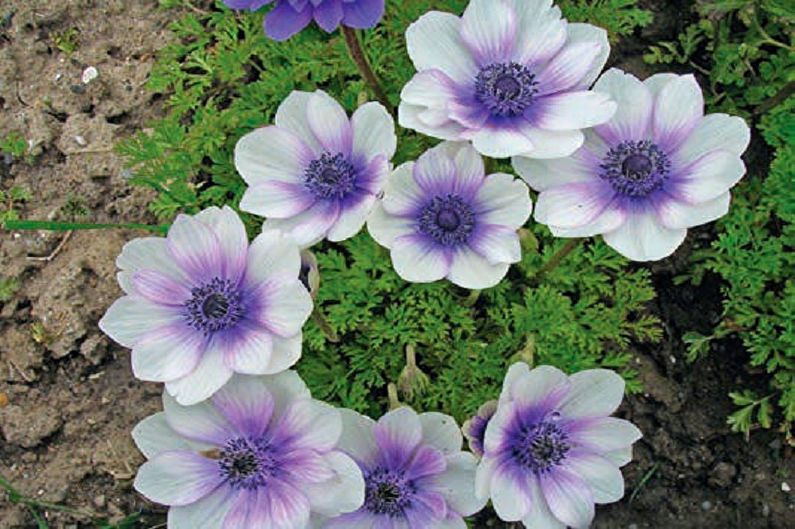
Anemone de Caen
Also a pretty famous representative of anemone. The flowering of this wonderful flower begins from the first days of summer, but after the onset of the first heat the foliage crumbles. As soon as the roots feel the autumn coolness, they immediately release new shoots and again delight with beautiful flowering. The stalk is quite stable and upright, reaches a height of 50 to 85 cm, the flowers are solitary, with an incredible color scheme.
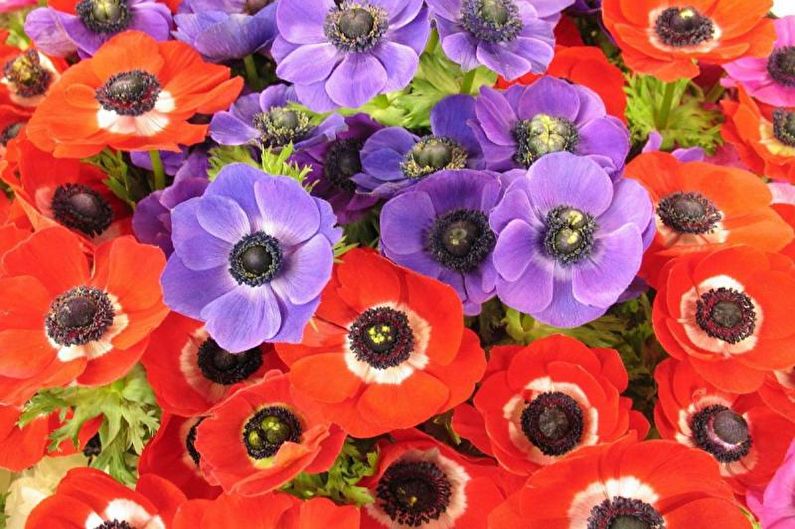
Anemone Autumn
A group of flowers, the flowering of which begins at the end of summer and continues until half of autumn. Beautiful and large perennials with very high peduncles (from 80 to 150 cm). Different varieties can have from a couple to several dozen full-fledged flowers. They can be terry, semi-double or ordinary. Autumn anemone will give bright colors to your garden during this gloomy period.
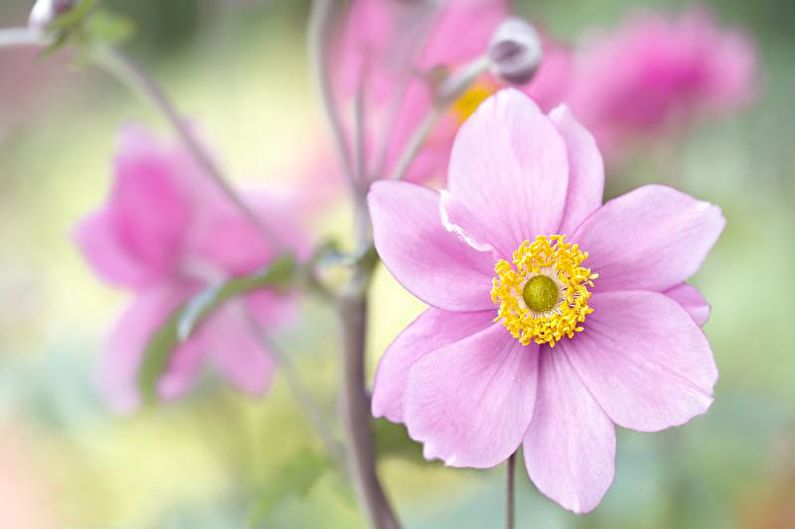
Anemone japanese
Another variant of the hybrid blooming in the fall. It has a fairly tall and strong stem, up to 1.5 m. Large leaves have the shape of a dissected feather and a dark green color. Large flowers, with a terry or ordinary texture. Presented in white, sometimes pink shades with a golden middle, germinate in late August or early September.

Forest Anemone
It is quite different from previous varieties. This is not a very tall plant (about 20-30 cm) with fairly large flowers. Flowering begins in late May or early July, and lasts about 15-20 days.
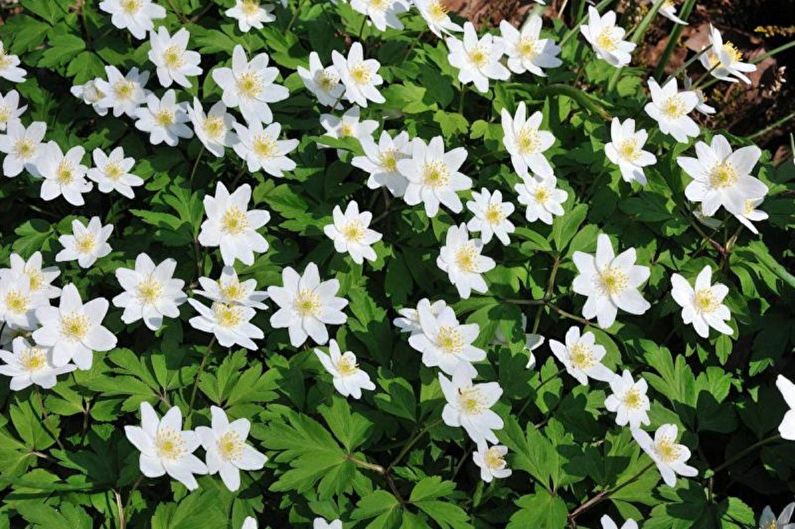
Anemone oak
Extremely unpretentious and tenacious variety of anemone. The height reaches about 20-30 cm, has white peduncles (which is why the alternative name is White Anemone) with a diameter in the region of 2 to 3.5 cm. Thanks to breeders, today you can find pink, blue or lilac hybrids.
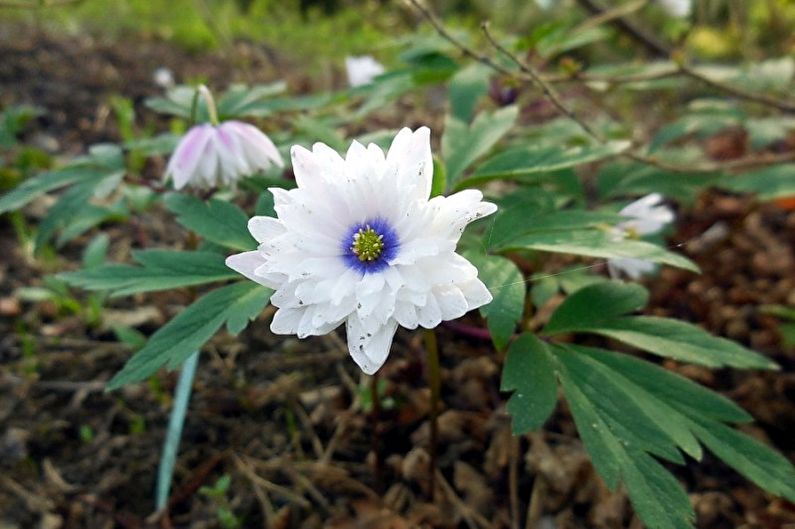
Terry Anemone
Beautiful decorative anemone blooming for a rather long period compared to other types of flower. It is preferable to plant in groups, as well as to create rockeries or alpine slides.
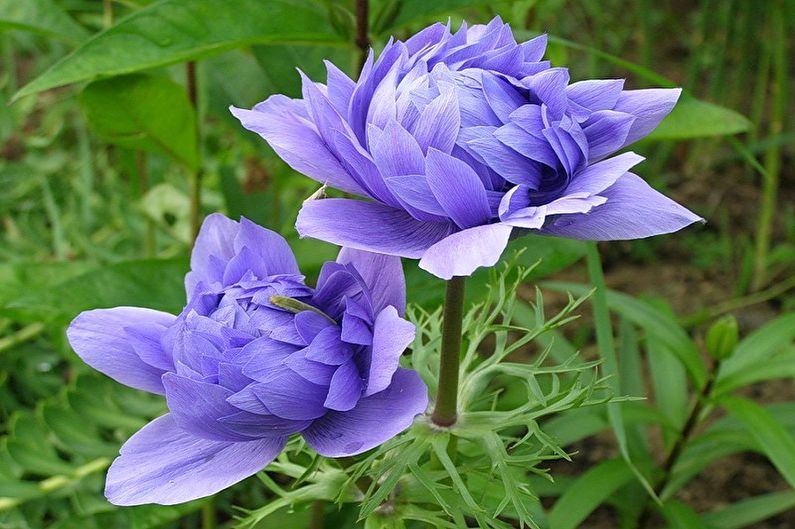
Landing anemone
Most care features depend on the variety or hybrid that you have chosen, but there are universal methods. We will talk about them further.
This plant needs a spacious and as much as possible protected from strong drafts site. They love light, but at the same time they can’t tolerate the burning rays of light. If you are not sure about the choice of place, then it is better to land anemones in partial shade. Such a solution will allow them to develop, and the risk of burnout in the strong midday heat will be minimized.
An ideal option would be to use deciduous soil fertilized with loam or peat.To improve soil structure and reduce water stagnation, use sand. If the acidity is increased, then the use of dolomite flour or wood ash will help correct the situation.
Before planting a flower, you need to germinate its roots, which is associated with a significant drying of the tubers after wintering. But do this very carefully, as the rhizomes absorb water like a sponge. If there is too much fluid, then the anemones will begin to rot. Wrap them in a damp cloth moistened with aloe juice for about 6 hours.
After the soaking step, place the roots in a small pot, then fill it with a moist mixture of sand and soil. To create a greenhouse effect, cover it with a thin glass or bag. The soil should not dry, moisten it. After 10-14 days, shoots should appear on the tubers. At this stage, plant them in a pot with sprouts up to a depth of about two tuber thicknesses. The most correct temperature for germination is + 12C, if the indicator is higher, then the shoots will germinate very quickly, but at the same time they will become very frail.
You can proceed to the process of planting anemones when the temperatures in the room and on the street are equal. Deepen the tuber by no more than 5 cm. Then, during the week, provide immature sheets with protection from the sun by shading them.
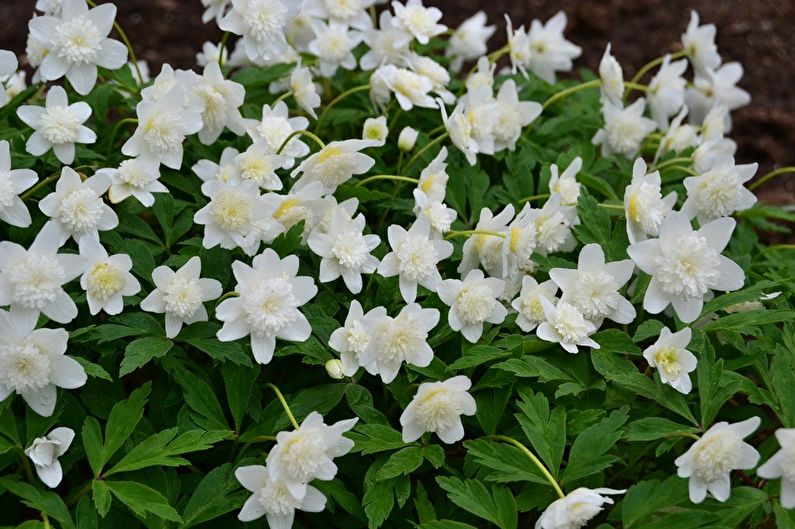
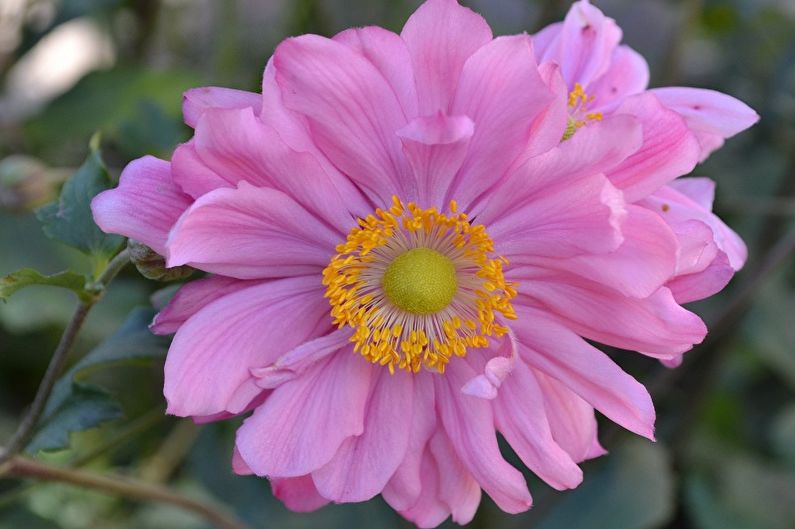
Watering and feeding
It’s easy to take care of the anemones, the main thing is to maintain moderate humidity of the root system, as excessive moisture can lead to decay. Mulching can protect the soil from excessive drying. Some species necessarily require such coverage to create optimal conditions for germination.
Anemones easily cope with a deficit of moisture in the earth, so they have enough rainfall. But if the weather presents for long dry periods, then watering is still necessary. You will also need to additionally water the plant during the growth or budding of the flower.
Organize top dressing with liquid fertilizers, but only during periods of budding or flowering. Note that you do not need to use fresh manure, when it is used, the anemones rot. If you fertilized the soil before planting, then additional recharge is not needed for a year.
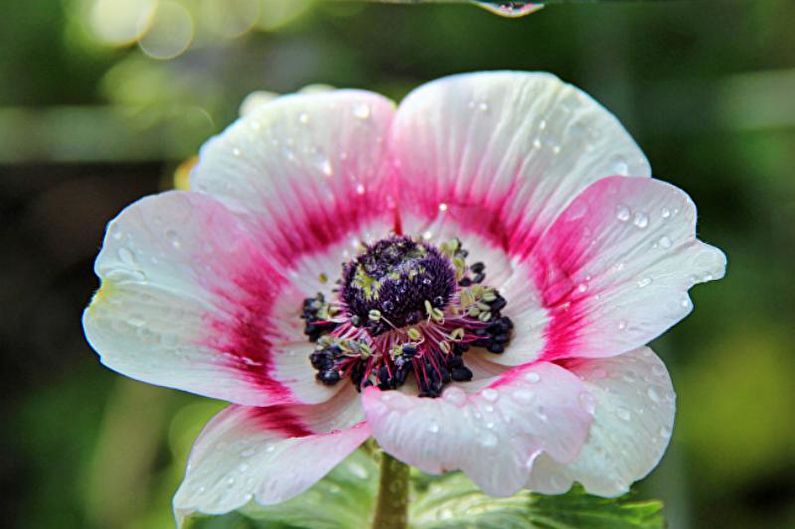
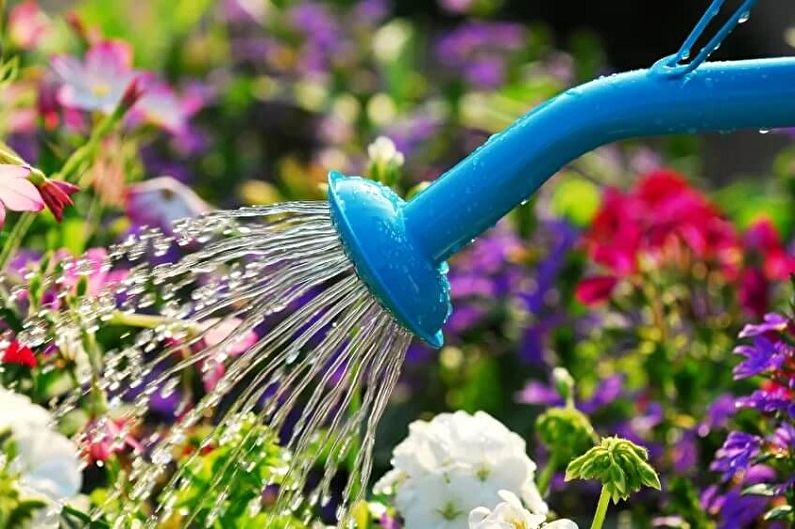
Breeding anemone
Vegetative propagation is practically not used for anemone, seeds also have a very low survival rate, and grains that are more than 2 years old almost never germinate.
To increase the likelihood of seed climbing, you need to stratify. It is necessary to close the grains very shallow, because very fragile anemones are not able to overcome the layer of the earth. With further germination, control the moisture of the soil, since young representatives of the flora lose their roots from rotting when waterlogged. Plants obtained from seeds begin to bloom only after 3 years.
The most preferred option for propagation is the separation of the rhizome. Carry out this operation at the very beginning of spring, when sap flow is still not very intense. Be sure to keep in mind that each root divide must have several points for growth, only in this way you can get the right amount of gardening.
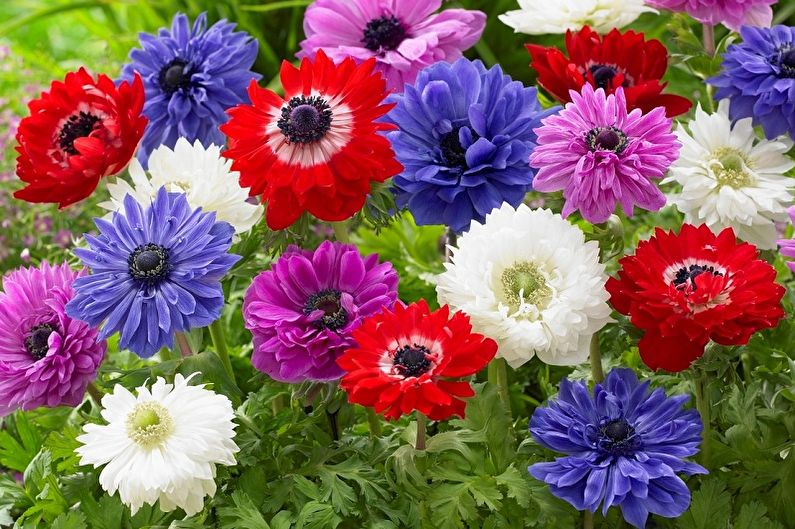
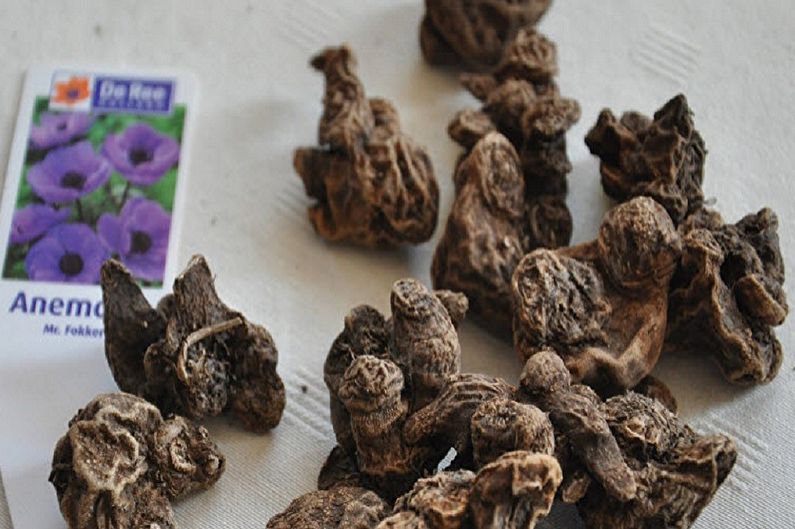
Wintering
Almost all types of anemone are not famous for their high frost resistance, so tubers are dug up for winter storage. For wintering, use cotton or paper bags. Place the roots in sand, sawdust or peat, they are used to maintain the necessary moisture, the temperature should be approximately like in the cellar.
Be sure to keep in mind that some varieties lose their leaves in mid-summer. In order not to cut the roots when digging, mark their place with a dry mixture of sand and cover with a film.
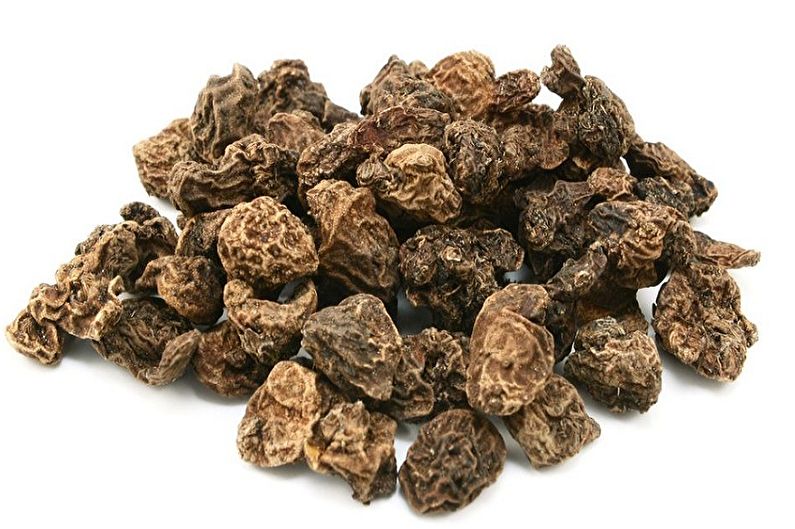
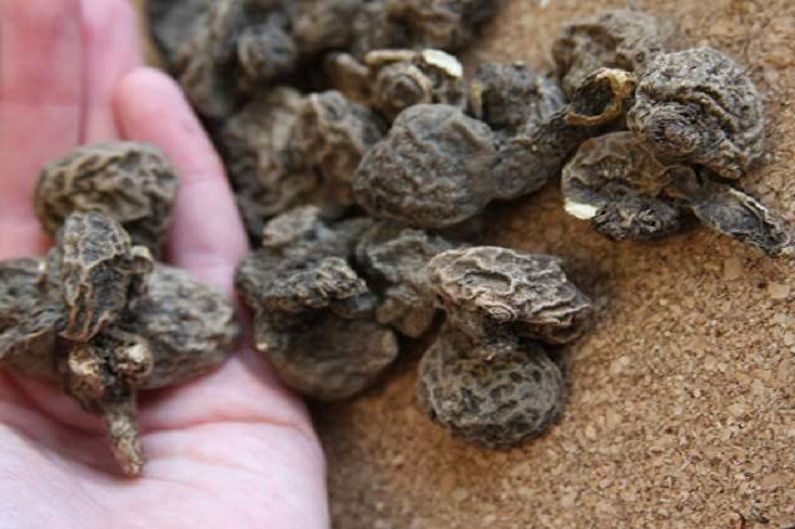
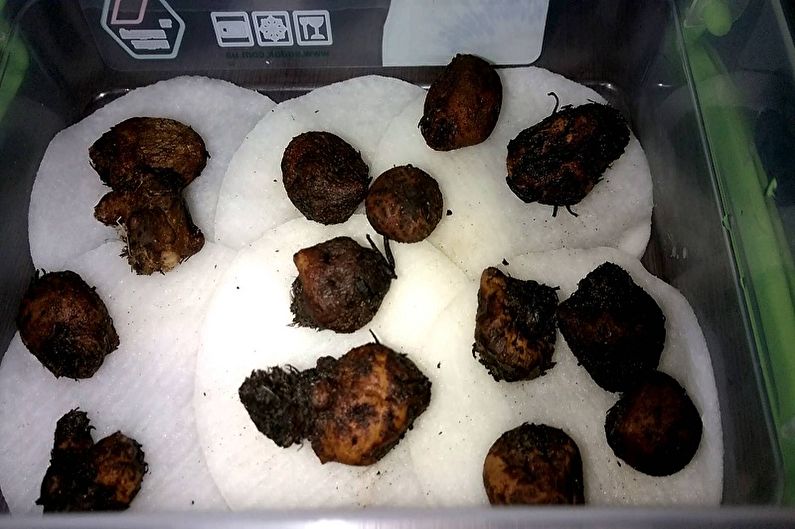
Diseases and Pests
One of the benefits of anemone is its resistance to many diseases and pests. Their main enemies are slugs and snails. To combat them, use treatment with a solution of metaldehyde, but first collect pests from the bush.Other varieties are attacked by the leaf nematode - to save the entire garden, remove the damaged bush, and replace the ground for disinfection.
As you already know from the previous sections, the greatest threat to the anemone is the increased soil moisture. Various parasitic fungi develop in it, such as sclerotiniosis or white rot, as well as peronosporosis (the popular name is “powdery mildew”). To combat them, you should use fungicides that can save the plant if the disease is not already running.
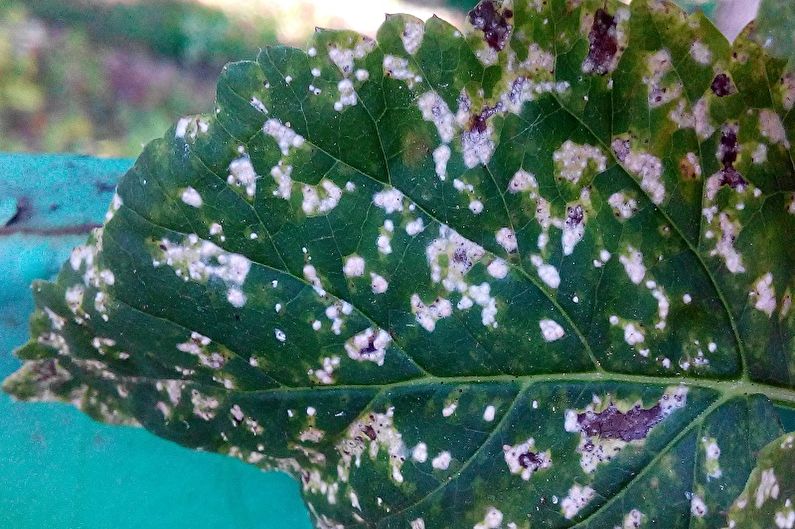
Anemones - photo
A huge number of varieties and shades of anemone can confuse you when choosing, if you have not come across this fascinating plant before. For some systematization, as well as your understanding of the varieties and beauty of these flowers, we have put together a small photo gallery. These photos will reveal the tenderness of the anemone and will definitely make you think about “settling” them in your garden. Enjoy watching!
